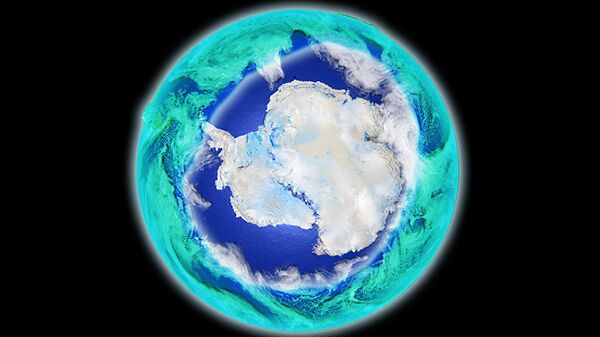A recent study by NASA's Goddard Space Flight Center has determined that while the ozone hole over the Antarctic did not change in size, as pointed out by previous studies, it has actually changed in its chemical composition. According to the study, the ozone layer is slowly replenishing, as chlorine levels in the atmosphere decline at about one percent each year. Scientists believe that this has become possible thanks to the Montreal Protocol that banned the use of chlorine fluoride carbons, (CFCs) a class of substances used in industrial applications that have been primarily responsible for ozone layer depletion.
Dr. Braathen: We want actually to minimize the degree of ozone depletion. And we have seen over the last 20-30 years quite massive ozone depletion in Antarctica. Every Antarctic spring — that means September, October and November — we see a massive ozone loss, and that is, of course, something we do not want. What the last report shows is that the Montreal Protocol actually is effective, one can now ascribe a slow improvement in the ozone hole, one can ascribe these small improvements to the effect of the Montreal Protocol.
Radio Sputnik: Apart from this research, it was also previously been reported that the ozone hole has been getting smaller in size. Is it safe to assume that the ozone layer is back to its original state or how long would it take before it is back to its original state?
Dr. Braathen: We can say that it will not get worse. The ozone is still low, both in Antarctica and the rest of the world; the ozone layer is still lower than it was 30-40 years ago, but we are confident that it is not getting worse. From now on, I think we will see a gradual, but slow, improvement over the next decades. The slowest improvement will be in Antarctica, because there is less exchange of air than in the rest of the atmosphere, so the changes take longer. The things in Antarctica will be back to normal by 2060, 2070 or 2080. We might even get what is called a "super-recovery," that means that in the future there will be even more ozone than we had 30-40 years ago.
Radio Sputnik: What else can be done by fellow humans, our Radio Sputnik listeners, to speed up the ozone recovery?
Dr. Braathen: Now it comes to CFCs, it is the main culprit when it comes to depleting the ozone. Those compounds are now banned, there is no more production or consumption anywhere in the world. We have now the replacement compounds, so-called HCFCs, they can still be used by developing countries until 2030 or 2040, but they will be gradually phased out. One could of course speed up that phase-out. In addition to that, there are lots of CFCs — and there is also another class of compounds that contains bromine. The study that made the news in the last few days is focusing mainly on chlorine, but there is also another chemical compound that contains bromine that also destroys ozone — and that you find in fire extinguishing equipment — they are called halons. They are especially used in maritime use, in aircraft, in boats and so on: halon is a very efficient fire extinguisher, but also very efficient at destroying ozone. So those also are banned. But HCFCs, they are still in use — as I said, we could phase them out faster. And then we have old equipment that is floating around: old refrigerators, old freezers, maybe old fire extinguishers floating around. In some countries people would just throw them out in the nature, where it will slowly corrode and rust, and then these gases will eventually leak into the atmosphere. So if one could collect all the equipment that contains the gases, that could actually accelerate the healing of the ozone layer by some 5 or 10 years.
Radio Sputnik: How important was the Montreal treaty and what would the consequences have been for humans had it not been reached?
Dr. Braathen: The Montreal Protocol has been really essential, it cannot be overestimated how important it is. If there had been no Montreal protocol and mankind continued to use ozone-depleting gases as before, then we would face the real ecological and environmental catastrophe.

